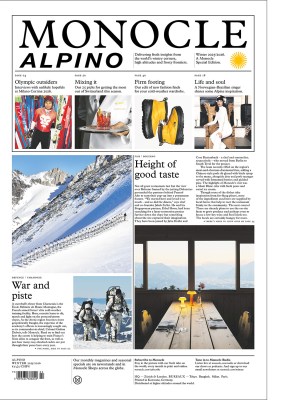Monocle’s rundown of five grocery stores reinventing food retail
From a Danish supermarket brand encouraging healthier eating habits to a taste of luxury in Ho Chi Minh City, grocery shops are focusing on enhancing customers’ experience. What’s in their baskets?
Grocery shopping often feels like a chore. But across the globe, smart retailers are showing that it can offer far more than just loud packaging, harsh strip lighting and busy, unappealing displays. Here, Monocle meets a few entrepreneurs who are going the extra mile to entice and excite their customers, whether by offering fresh, locally sourced products or by scouring the world for the best brands and suppliers. Some of these retailers are neighbourhood institutions, while others service a smaller niche. The common thread, however, is an understanding of food’s power to nourish communities as well as individuals. Many people now rely on delivery apps, while the big supermarket chains seem to be growing increasingly impersonal. The following businesses are reminders that there’s value in creating more meaningful, intimate retail experiences.
1.
The pleasure emporium
Lighting the way
Epic, France
When shoppers enter French supermarket chain Epic’s flagship shop in Paris, they are greeted by the sight of a huge chandelier. Assembled from 4,000 clear glass jars, it casts a warm glow over a bounty of dried fruits and nuts. “We were aiming for a ‘wow’ effect,” says Franck Hadjez (pictured), Epic’s co-founder and principal buyer. “But we also wanted it to draw customers in towards the back of the shop.” Deep within Epic is a section dedicated to what Hadjez calls “pleasure groceries” – an aisle offering more than 50 kinds of hot sauce, an alcove of olive oils from across the Mediterranean and about half a dozen beautifully illuminated sections dedicated to regional delicacies from across the globe. The shop stocks a wide selection of cheeses rarely found in other French supermarkets too, including a Corsican soft variety with a coating of wildflower petals.

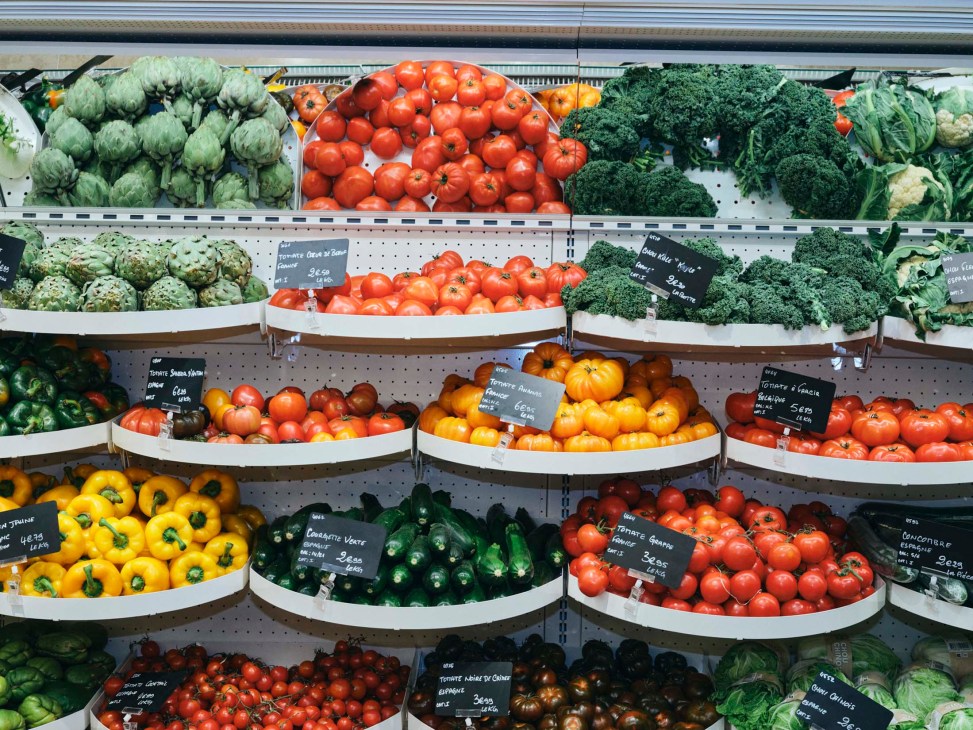
Hadjez, his brother Jordan and cousin Steve are second-generation grocers. All three began their careers elsewhere but ultimately joined what Hadjez describes as the “more human-centric” family business. They had been franchisees of UK multinational chain Marks and Spencer for eight years; its outposts included a location in the heart of the Saint-Germain-des-Prés neighbourhood. In the years following Brexit, Marks and Spencer’s French outposts began to close, forcing the Hadjez clan to decide what they wanted to do with their prized 6th-arrondissement location.
The result was Epic’s first shop, for which Hadjez partnered with French retailer Monoprix to sell everyday essentials, complemented by a vast selection of delights sourced directly from small producers. These range from Emirati camel-milk chocolate to Monegasque gin. The business model might be unorthodox but it has allowed Epic to grow. “I can offer my premium products at a lower price than a fine-foods grocery shop, where margins are higher because they’re all it sells,” says Hadjez. Epic takes its name from the word “epicurean” – a nod to the pleasure-seeking disciples of Greek philosopher Epicurus – but the moniker also refers to the traditional French épicerie.


The success of the shop in Saint-Germain-des-Prés (its revenue in 2024 was about €8m) emboldened the Hadjez family to transform its Galeries Gourmandes outpost – another of its historic locations, adjacent to Paris’s wealthy western suburbs – into the new Epic flagship. This shop opened in October 2024. “We are looking at opportunities in other French cities,” says Hadjez. “We’re even considering franchising Epic elsewhere in Europe.”
epic-paris.com

Our picks from Epic’s shelves
1.
Al Nassma Camel Milk Chocolate
A creamy treat from the uae-based producer.
2.
Las Chachitas
Mexican-style salsa made in the south of France.
3.
Noam
A light lager from a young brewery in Munich.
4.
Oliu Ottavi
Olive oil from Corsican groves.
5.
Porthos sardines
Canned fish from Portugal.
Monocle comment:
Returning a sense of discovery to grocery shopping requires personality in both the selection of products and the layout.
2.
The new normal
Going with the flow
LoSurdo’s, Australia

LoSurdo’s has been trading fruits and vegetables in Sydney for two generations. Originally founded in 1957 in Double Bay, the grocers moved to a suburban mall called Chatswood Chase on the other side of the Harbour Bridge in 1981. The business later relocated again and opened outposts in Lane Cove, Northbridge, Macquarie Park and North Sydney.
Earlier this year, LoSurdo’s returned to its roots by opening a vast flagship shop in Chatswood Chase, featuring a dazzling array of fresh produce from across Australasia, as well as a delicatessen, a fishmonger and a section for dry goods. It doesn’t quite reinvent the business but it’s a testament to the power of good design.

“I first worked with co-founder Domenic LoSurdo in the 1990s on the original shop here,” says Mark Landini, the founder of Landini Associates, which worked on every facet of the new shop, from the signage to the uniforms. “This has been a 32-year-long relationship. Domenic had seen a florist that I had designed in this shopping centre. I had learned that florists spend two hours every morning taking flowers out of the fridge and then two hours at the end of the day packing them back in. So we built the shop so that you closed the doors in the evening and the whole thing became a cool room.”
That kind of thinking was crucial to the design of the new LoSurdo’s in Chatswood. “Consideration of customer flow was key – how a patron moves through the space,” says Landini. A team of six designers worked on the complete experience, encompassing every customer touch point from branding and interior design to lighting and packaging, which makes use of the brand’s signature colours, green and white. “Efficiency was the starting point,” says Landini. “The look of the space was the last part we considered.”
The designer, who was Terence Conran’s creative director at Habitat in the 1990s, applies what he learned in premium retail to his work on grocery shops and supermarkets. His previous clients include Loblaws at Maple Leaf Gardens in Canada and Italy’s Esselunga group. “Esselunga allowed us to reinvent how supermarkets operate,” he says. “They now have the highest turnover per square metre for a supermarket in the world – more than Walmart. No one else has really changed how supermarkets work since they were first invented in Memphis, Tennessee, in 1916.”
After Domenic LoSurdo retired in 2000 his son Rob, who was a commercial pilot by training, took the reins of the family grocery business. In December 2024, however, Rob suddenly passed away and his wife, Summer, took over.
Monocle spoke to Rob as the finishing touches were being made on the new shop – his sixth collaboration with Landini on a grocery project. “Mark understands balancing the needs of the customer with functionality, including spacious aisles for users’ comfort and space for merchandising,” he said. “It’s a fine balance.”

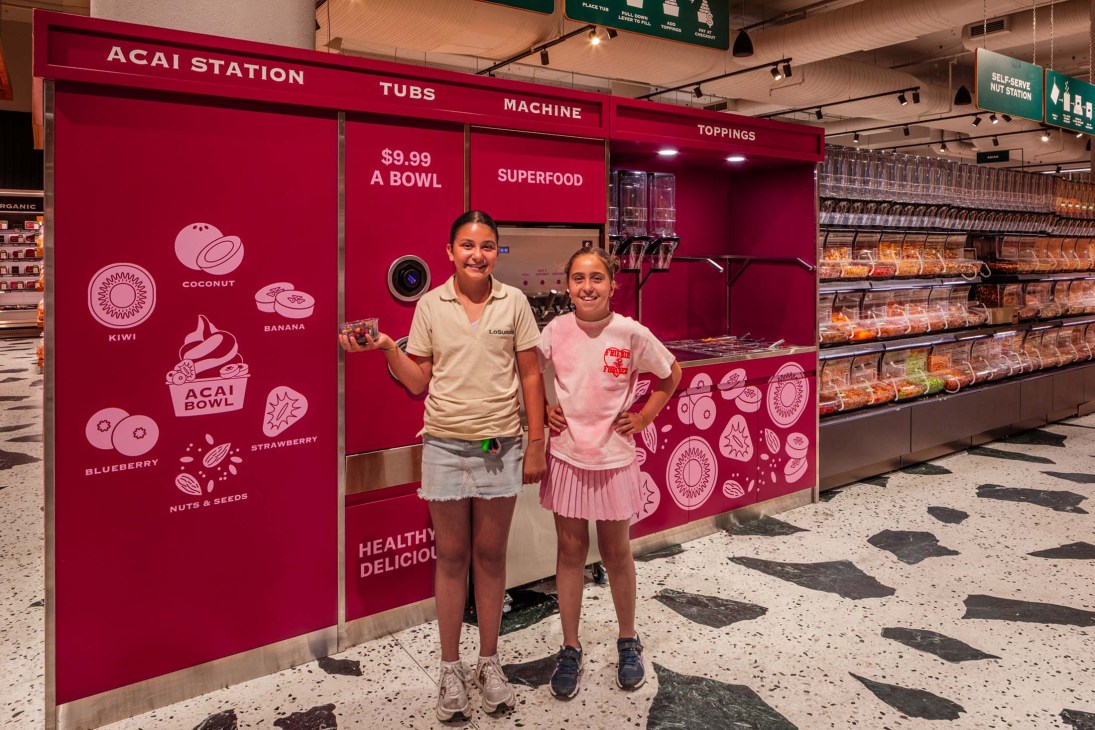
The new LoSurdo’s outpost was inspired by Peck, a storied institution in Milan, says Landini. “We wanted to create a place that celebrated the love of food in a similar way.” About 85 per cent of the practice’s work is global and a significant proportion of its work comes from purveyors of food that are looking for fresh ideas. “We have become known for reinventing the normal.”
shop.losurdos.com.au; landiniassociates.com
Monocle comment:
Bringing in an external design firm can be risky for a storied family business. But finding a studio with deep retail experience can help you to tell your story and freshen up your identity.
3.
The personal touch
Out of the past
Alma, Denmark
When Danish supermarket chain Irma closed its doors in 2024 after 138 years, there was an outpouring of grief from its loyal customers. But according to Alfred Josefsen (pictured), its CEO from 1999 to 2012, its decline began in 2016 when its buying department was integrated into parent company Co-op’s organisation. “Its selection ended up much the same as the other supermarkets,” he tells Monocle.
Josefsen presided over Irma’s heyday, when customers adored its own-label lines, spacious shops and attentive service. Now he has launched a new brand, Alma Madmarked, whose first shop in Frederiksberg opened in March this year. “We want to attract young people and families who once thought that Irma was unaffordable,” he says.

Products adorned with Irma’s distinctive logo, a girl in a blue dress, were design classics and much-loved souvenirs among Japanese tourists. Alma’s logo – a blue heart – is similarly appealing. Meanwhile, the distinctive design of the brand’s interiors is intended to entice a new generation of shoppers. While meat will still be sold, Alma wants to inspire Danes to adopt a more plant-based diet. It will also avoid ultra-processed foods.
Above all, Alma prioritises customer experience. (There’s not an automated checkout in sight.) And the name? “My grandmother was called Alma,” says Josefsen. “She was born in 1906 and what she would have eaten would have been grown by her family and was probably organic. She inspires me to help people have a better understanding of what they’re eating.”
almamad.dk
Monocle comment:
Building a relationship with customers takes time – but a focus on shoppers’ experience will pay off in the long run.
4.
The wheeler dealer
On the road again
Migros, Switzerland
With sales of CHF32bn (€33bn), Migros is now one of Switzerland’s largest supermarket chains, with almost 790 outposts across the country – but its story has humble origins. A century ago, Gottlieb Duttweiler turned a fleet of five Ford Model Ts into mobile supermarkets. Families would line up every week, waiting for the Migros bus to arrive. To mark its centenary, the company is reviving its grocery van, which is touring the country this year with 100 of its bestselling own-brand products.
Migros timeline
1925: Seeking to bring high-quality, well-priced food directly to the people, Swiss politician and entrepreneur Gottlieb Duttweiler launches Migros’s fleet of grocery buses.
1926: Migros opens its first bricks-and-mortar shop in Zürich.
1945: By the end of the Second World War, the Migros buses offer 320 products.
1964: The range expands to 500 items.
2007: Migros retires its fleet of grocery buses.
2025: The iconic van is resurrected as part of Migros’s centenary celebrations and a tour across the nation begins.
“Migros has always travelled to the people,” says Philipp Kuonen, the bus tour’s manager. Known as the Merci Bus, it will roam the cantons of Appenzell and Jura, before continuing to Zug, Geneva, St Gallen and Graubünden, handing out each region’s bestselling Migros product to shoppers there as a token of thanks for their loyalty.

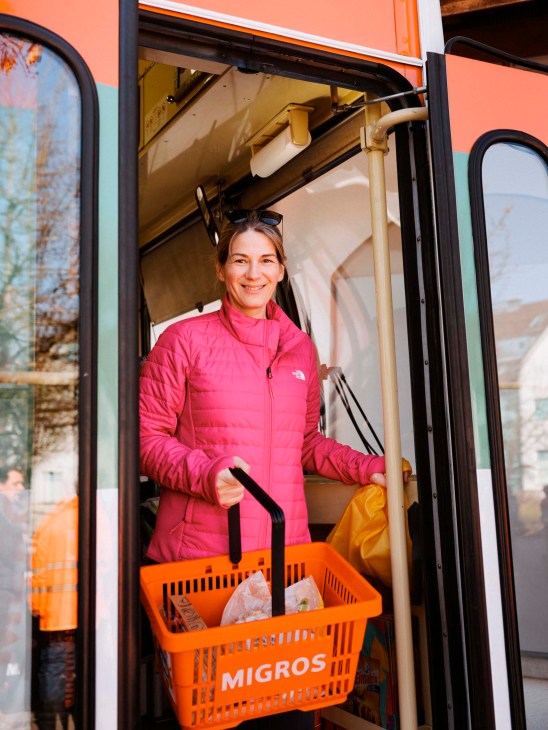
The bus revival isn’t just a gimmick. At a time of fierce competition among Swiss supermarkets – with newer brands such as Coop’s Fooby muscling in with new openings in Zürich – Migros needs to stake out its territory. The bus is a way to remind customers in this landmark year that the brand has deep roots in the Swiss countryside, where it sources delicacies from cervelat sausage to emmental cheese. It’s also a signal of the firm’s ambitions for the future. There are 140 new outposts planned over the next five years, as well as a refresh of 230 existing shops.
When Monocle visits the Merci bus on its maiden voyage, shoppers and children wait in line, just as people did in the past. The original narrow vehicles opened up on both sides, revealing shelves holding coffee, rice, sugar, croissants, soap and coconut oil. Duttweiler stipulated that prices should sit somewhere between wholesale and retail, and every product was emblazoned with Migros’s orange M logo – a distinctive brand identity that earned the business the nickname “the Orange Giant”. Migros might have grown bigger than Duttweiler ever imagined but it’s his devotion to domestic produce and fair prices that has kept the show on the road.
migros.ch
Monocle comment:
Getting out and meeting customers is a powerful brand-building exercise. Migros is returning to its roots at a moment of fierce competition from other Swiss supermarkets.
5.
The local treasure trove
Spoilt for choice
Annam Gourmet, Vietnam
“We are growing along with the country,” says France-born Eric Merlin, who co-founded Annam Gourmet in Vietnam in 2000 with his wife, Ha. The Merlins oversee 14 supermarkets, 900 staff and an annual turnover of about €46m. The group’s Montclair brand makes everything from sausages to sorbets. Signage at Annam Gourmet shops is in both Vietnamese and English but local customers outnumber expats.
The Merlins met in Hanoi in the 1990s when Eric was working on his travel agency. Ha decided to venture into food retail soon after giving birth to the first of their four daughters. At the time, Vietnam’s GDP per capita was about €370 and there were concerns over
food security. Soon after opening the first shop, Ha was fielding requests from friends and chefs to stock specific products. “Annam Gourmet wasn’t meant to become a chain,” she says. “At first we were bringing in items that we had bought from European supermarkets by hand because we couldn’t get access to wholesale prices.”

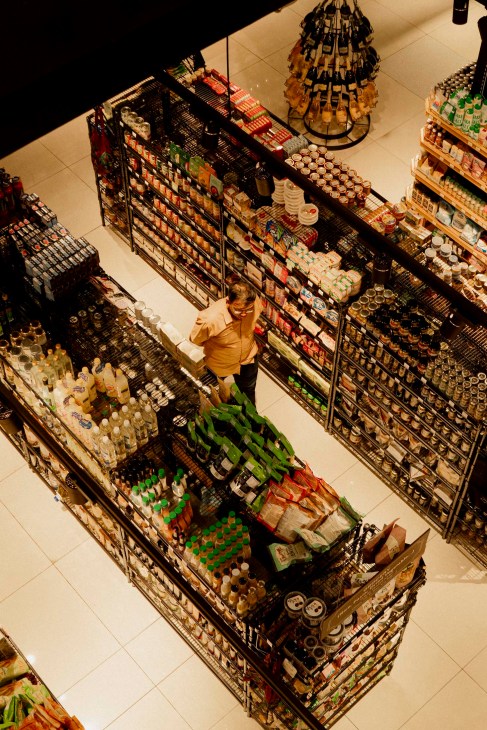

Today, Vietnam’s GDP per capita exceeds €3,900 and Annam Gourmet sells plenty of local fruits and vegetables, alongside Bonne Maman jam and Barilla spaghetti, imported into the country by sister business Annam Fine Food. “The quantity of sales and the quality of products are intrinsically linked,” says Eric. “If we didn’t attract a lot of footfall, with people buying the fruits, fish, cheese and meats, they wouldn’t be as fresh and we wouldn’t be able to stock so much.”
In one of Annam Gourmet’s Ho Chi Minh City shops, Eric talks proudly about stocking 17,000 products and points out the high shelves that tower over two young, basket carrying shoppers browsing a cornucopia of wafers, crackers and biscuits. Choice entices people inside and delivers the profit margins that allow the business to price-match everyday essentials.
Annam Gourmet’s big break came in 2015 when Singaporean property developer Keppel approached the Merlins to open their first full-scale supermarket in the basement of the Saigon Centre, a premium shopping mall. The couple flew to France to recruit a team with retail know-how and spent two years building the supply chain and cold storage infrastructure necessary to operate a delicatessen, a bakery, a butcher and a fishmonger. “I love the idea that sharing something relatively cheap, such as a big, beautiful piece of bread and some good, salty butter, can create a certain lifestyle and a wonderful moment with friends,” says Eric.
annam-gourmet.com
Monocle comment:
Annam Gourmet succeeds because of its owners’ passion for food. The importance of cooking in both French and Vietnamese households is reflected on the shop floor, where every aisle and fresh-food counter offers a sense of luxury escapism.


